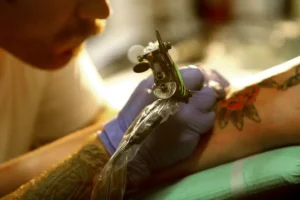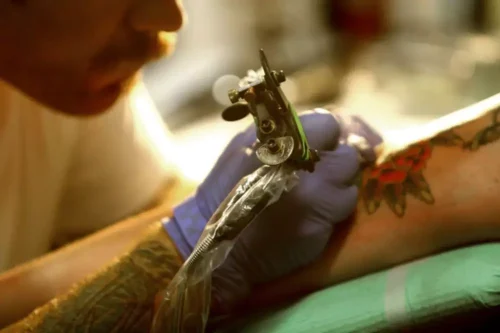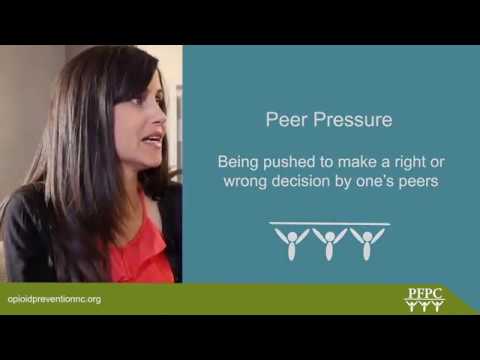
Direct indirect peer pressure Peer Pressure — being put in a position to make on-the-spot decisions. Direct peer pressure is normally behavior-centric, like having alcohol forced on you when you’re known not to drink. Negative Peer Pressure — being pressured to do something that goes beyond your moral beliefs or against your core values. It can lead you to adopt a lifestyle beyond your means or change the way you think.
- Peer pressure is the influence exerted by the majority on a person, to the point of it being capable of modifying their thoughts, feelings, and behaviors.
- In the 1940s, Nazi Germany, led by Adolf Hitler, began a systematic purge against the Jewish people living in Europe, killing around six million Jews by the end of World War II.
- For instance, if a peer group wants to make good grades, a young teen can be positively influenced to study.
- Some studies did not find a gender difference 6,16 and others have revealed that girls perceive more parental teasing 24,27.
Indirect Peer Pressure
- In other words, peer pressure influences people to do certain things and behave in certain ways that they might not usually do.
- Thus, we used general terms like “appearance“ or “body shape“ and tried to avoid specific ones like “thinness“ to avoid a bias.
- Positive peer pressure can foster sense of belonging, self-confidence and a solidified sense of self.
- Indirect peer pressure is what one sees and hears other teenagers doing.
Based on previous results, comparing male body image in Western and Asian cultures, we assume that the divergent results might point to a cultural difference. Thus, research still remains limited for the purpose of drawing firm conclusions about gender, body mass variations and age-related trends in the perception of social pressure. Findings on peer and parental teasing have been particularly inconsistent. While in some studies 26 girls were more frequently faced with peer teasing, others did not find any gender difference 18,27 or even found more teasing experiences among boys 7,16. Some studies did not find a gender difference 6,16 and others have revealed that girls perceive more parental teasing 24,27.

Main effects for body mass
Rather than risk being rejected by those that we think are worthy of our respect, we may sacrifice our own beliefs or ideas and act upon theirs. Adults who think that they might have an addiction should talk with a doctor. Children who need help should approach a parent, caregiver, teacher, or school counselor. A 12-step program may also be a good option for people who lack family support, as these programs are both anonymous and free.
Factors Leading to Peer Pressure
- Peer pressure can be both positive and negative, as in some cases, people may put pressure on others not to use recreational drugs and alcohol.
- Children’s Health offers one of the most comprehensive specialty programs available for children and teens who need psychiatry and psychological services.
- In line with stigmatization research 49 and our expectations, the results suggest that overweight adolescents are generally faced with more appearance pressure regardless of their gender.
- Nonetheless, this type of positive peer pressure is present all the time.
- In other words, teens with friends who smoke are more likely to also smoke.
Instead of making snap decisions think through the scenario as well as the positive and negative https://ecosoberhouse.com/ impact each outcome can have on your life. Here’s a breakdown of six types of peer pressure, and tips for parents who want to help their child make healthy, life-long choices. Unspoken Peer Pressure — when you’re exposed to the actions of your peers and choose to follow along.
- So, they probably try to support weight control and dieting efforts with comments designed to act as reminders.
- Peer pressure in younger children tends to be limited to copying bad behaviors such as acting out or taking things that don’t belong to them.
- Research shows the most impressionable age for peer influence seems to be the middle school years.
- So, friends motivate someone struggling with their mental health issues by suggesting they seek professional help to not struggle alone, thereby offering tangible emotional support.
- As such, there are two positions, most notably held by Christopher Browning and David Goldhagen.
- The dynamics of a peer group can be a positive influence and assist in establishing healthy and wholesome behaviors that are age-appropriate and socially accepted.

However, parents have been found to become more concerned with the physical attractiveness of their adolescent child. Thus, we expected that parental encouragement to control weight and shape would be more prevalent among older adolescents. Instead of influencing peers to follow good behaviors, negative peer pressure influences others to go against their moral code or values. Teens may look to the actions of teens with stronger personalities and follow their example, even if they don’t agree with them. For instance, a teen may know it’s wrong to drink alcohol while underage, but they may do it anyway because they want to be accepted by the group.


A teen is afraid of ridicule and losing his/her friend(s) if he/she doesn’t do what is asked. To support children in an age of screens and social media, it’s important for parents to teach healthy digital habits that encourage emotional health. In contrast to Chen and Jackson 31, these effects proved to be comparable for girls and boys in this German sample.
How Peer Pressure Affects All Ages
The term “peer” often refers to people one knows in real life and who have a similar social status to oneself. For example, television shows can convey to the public an acceptable way to behave, even though the people on TV do not know every individual they are influencing. Examples of these kinds of behavior would be when a teenager hands another teen an alcoholic drink, or makes a sexual advance, or looks at another student’s paper during a test. The other teen is put in a position of having to make an on-the-spot decision. Spoken peer pressure is when a teenager asks, suggests, persuades or otherwise directs another to engage in a specific behavior.







